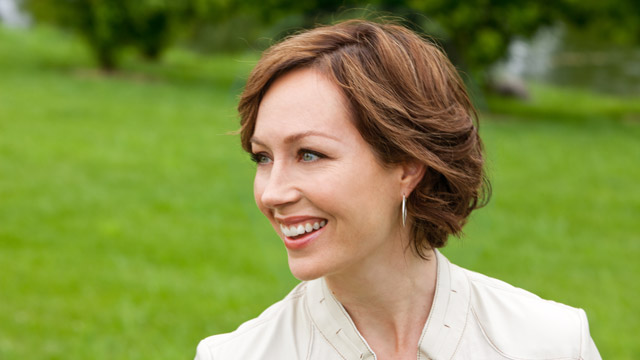Math and chemistry symbols made my eyes swim and my brain go fuzzy. None of the tiny, underfunded schools I attended even had science labs, and so to me science was just another academic subject, another dry textbook, and as such, it utterly failed to capture my imagination.
That all changed, though, the first time I looked through a microscope. It was in 10th grade, in a cell-biology class I had reluctantly signed up for at a neighboring high school to fulfill a graduation requirement. I took the class pass-fail.
One of the first days in, we had to swab cells from the insides of our mouths, place them on glass slides and then look at them under high magnification. I remember thinking at the time: “Oh yuck, this is gross.” But then I looked and saw what was going on under the microscope.
It was mind-blowing:
Cells! With nuclei! And endoplasmic reticulum, and other science stuff I didn’t yet have the names for! All that crazy, intricate machinery was operating, right now and always, inside my body? Far out! I was hooked.
And thus began my halting, awkward and mostly random study of science: biology, geology, ecology, astronomy, physics, chemistry. I never did learn all the symbols, never began to get the math, but I got very interested indeed in how the physical universe worked, how our bodies worked, and how our bodies and our environment interacted.
In many ways, this was the beginning of my interest in personal health, too. Looking at images of healthy and unhealthy cell walls, muscle tissues, organs, blood vessels, nerve fibers, synapses and brain waves was enough to convince me that it was worth doing whatever it took to keep my body on the healthy side of things. Seeing pictures and reading descriptions of how intricately all these ingenious systems were connected inspired me to want to safeguard them against all possible damage, to nourish and build them to a pulsing, vibrant level of vitality.
I became convinced that if other people could actually see what they were doing to their beautiful bodies by making unhealthy choices — if they could witness the cell-level impact of low-quality food and compromised water, of sedentary pastimes and inadequate sleep — they would be scared straight. If people could see how amazing and full of potential a truly healthy body and brain looked, at any level of magnification, there would be no doubt in their minds about how they wanted to live. And if they could see how directly the health of the natural environment affected their personal health, they’d be determined to safeguard that system, too. Because what you learn when you get more than knee deep into any kind of science is that it’s really all just one big, intelligent, exquisitely designed organism. For better or for worse, actions taken in one place have a way of showing up as reactions somewhere else, often in places you wouldn’t necessarily expect.
The reactions are complex, and subtle in many cases. So sometimes it takes seeing to believe that anything is happening at all. This is one place where science and technology can come in handy. Whether you are looking at satellite pictures of dwindling rainforests and icecaps, or at the lab results of a blood workup at your doctor’s office, having documented, quantifiable evidence of where things stand is often the first step toward changing them for the better. Whether you are looking at the brain waves of a person thinking loving thoughts, or the cellular membranes of a person drinking plenty of water, seeing the tangible evidence of healthy behaviors can inspire you to do more of the right thing yourself.
Of course, it’s worth noting that many so-called modern advances — from trans fats to toxic cleansers — have undermined our health as much or more than they’ve helped it. But in this issue of EL, we’re more interested in honoring what science and technology can tell us about the intelligence of the systems that have been here all along. Science has a lot to teach us about how we can strengthen, protect and respect our interdependent, foundational structures more wisely. Technology is a tool we can use to enhance or dilute the vitality with which we’ve been blessed. That’s important, because right now, if you were to look at your own body under the microscope, what you’d see there would inspire you: trillions of busy, miraculous and resilient little cells whose health and welfare depend upon the wisdom of the choices you make every day.

This Post Has 0 Comments